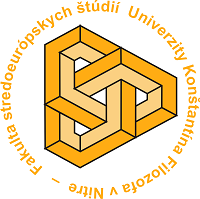Aims of the conference
General objectives if the work of the WGNDV
- The conference is as the four previous ones - devoted to the description of pluricentric languages and in particular of non-dominant national varieties of plc. languages and continues its work set up by the concepts outlined in Kloss (1951/1978) and in particular by Clyne (1992).
- The WGNDV focuses on the promotion of the theory of plc. languages by its worldwide perspective and on varieties that are small by the number of their speakers and their symbolic power, and are not the primary norm-setting centres of the language. They may often be falsely attributed the status of a "Dialekt", and often have little or no codification of their norms.
- The previous conferences of the WGNDV (see www.pluricentriclanguages.org/conferences) have shown that non-dominant varieties around the world have many linguistic and sociolinguistic features in common. We would therefore like to deepen our knowledge and invite scholars from around the world to take part in the conference and give insight into the situation and features of as many nd-varieties and plc. languages as possible.
Objectives of the 5th conference:
The WGNDV wishes to continue in the line of the previous conferences and to extend the scope of its research. This time the conference will try to focus on the influence of geographic aspects on the modelling of dominant and non-dominant varieties to further advance the understanding of whether geographically contiguous varieties follow the same pathways in their affirmation as own varieties as do geographically separated ones (e.g. European and Brazilian Portuguese). The main objectives of this conference are:
- To discuss different theoretical approaches and models for the description of plc. languages, especially in regard to languages with contiguous language areas (Albanian, French, German, Spanish, Russian etc.). Different models are propagated at the moment and need consideration in respect to their validity
- In addition to the aspects outlined in (1) we want to deepen the theory of plc. languages and the methods for the description of nd-varieties in particular in respect to:
- Measures and methods of status planning and corpus planning etc.
- Migrant varieties creating new types of pluricentricity
- Second level forms of pluricentricity within national varieties and their theoretical treatment
- Strategies for coping with language shift caused by electronic media and satellite TV spreading dominant norms to non-dominant varieties
- The usage of endonormative codification strategies and their impact on the development of varieties and languages
- Treatment of linguistic and pragmatic features of nd-varieties in education in primary and secondary schools
- Principles of codification in diglossic language communities of plc. languages, esp. the treatment of divergent linguistic forms that are common in everyday communication
- To get more information about the situation of as many pluricentric languages and non-dominant-varieties in order to get empirically secure descriptions of effects of non-dominance:
- on the identity of their speakers and the identity of their language communities
- on the treatment of norms in written and spoken language
- on the principles of codification and their spread to younger generations
- on methods in speech technology and language-technology, how linguistic variation between and within national varieties and nd-varieties in particular can be treated and modelled
- To get exhaustive reports of the situation of as many plc. languages and nd-varieties around the world as possible and in particular of lesser known and researched plc. languages and nd-varieties like:
- Albanian, Aramaic, Aromunian, Basque, Bengali, Chinese, Croatian, Guaranni, Hebrew, Hindi/Urdu, Hungarian, Kiswahili / Swahili, Kurdish, Mapudungun, Occitan, Pashto, Punjabi, Quechua, Tamil, Romanian, Russian etc.
- ND-varieties of English, French, Spanish, Portuguese in Europe, Americas, Africa and Asia
- ND-varieties of German in Austria, Belgium, Italy, Switzerland, Liechtenstein, Luxemburg
- Reports on the development of Russian in the former member-states of the Soviet Union
Other topics are welcome!
|

